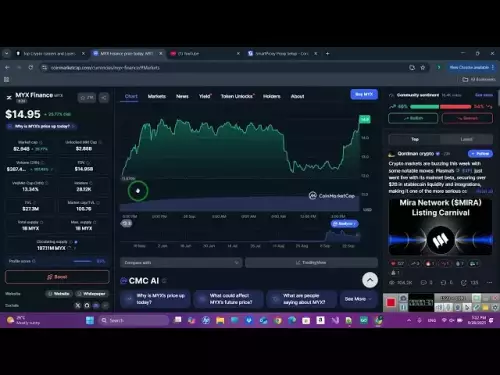 |
|
 |
|
 |
|
 |
|
 |
|
 |
|
 |
|
 |
|
 |
|
 |
|
 |
|
 |
|
 |
|
 |
|
 |
|
作為多鏈互操作性、零知識證明應用以及 DeFi 和 NFT 生態系統的重要推廣者,Polygon 在上一輪牛市週期中曾一度風光無限。然而在過去的一年中,Polygon 等許多公鏈項目卻未能取得新的突破,反而逐漸被 Solana、Sui 或 Base 等新興競爭對手的光芒所淹沒。當 Polygon 再次回到社交媒體的討論中時,並不是因為有任何重大的更新,而是因為 AAVE 和 Lido 等生態合作夥伴的退出。

Polygon, a multi-chain interoperability promoter and a key player in the zero-knowledge proof application, DeFi, and NFT ecosystems, had its moment in the last bull market cycle. However, over the last year, while many public chain projects like Polygon failed to achieve new breakthroughs, they were gradually overshadowed by new competitors like Solana, Sui, or Base.
When Polygon re-entered the social media discourse, it wasn't because of any major updates but because of the departure of ecosystem partners like AAVE and Lido.
"Borrowing chickens to lay eggs" proposal sparks concerns
On December 16, Aave contributor Aave Chan published a proposal in the community to withdraw its lending service from Polygon's Proof of Stake (PoS) chain. The proposal, drafted by Aave founder Marc Zeller, aims to gradually phase out Aave's lending protocol on Polygon to prevent potential security risks in the future. Aave is the largest decentralized application on Polygon, with over $466 million in deposits on the PoS chain.
Coincidentally, on the same day, liquidity pledge protocol Lido announced that Lido on the Polygon network will be officially deactivated in the next few months. The Lido community stated that the strategic refocus on Ethereum and the lack of scalability of Polygon POS are the reasons for deactivating Lido on the Polygon network.
The loss of two major ecological applications in a single day is a huge blow to Polygon, especially considering the main reason for this is that the Polygon community released the "Polygon PoS Cross-Chain Liquidity Plan" Pre-PIP improvement proposal on December 13. The main goal of the proposal is to use the stablecoin reserves of over $1 billion on the PoS chain bridge to generate income.
It's understood that the Polygon PoS bridge holds about $1.3 billion in stablecoin reserves, and the community suggests deploying these idle funds into carefully selected liquidity pools to generate income and promote the development of the Polygon ecosystem. Based on the current loan interest rate, these funds could bring in about $70 million per year.
The proposal suggests gradually putting these funds into a vault that complies with the ERC-4626 standard. Specific strategies include:
DAI: Deposit into Maker's sUSDS, the official yield token of the Maker ecosystem.
USDC and USDT: Use Morpho Vaults as the main income channel, and Allez Labs will be responsible for risk management. The initial markets include Superstate's USTB, Maker's sUSDS, and Angle's stUSD.
Moreover, Yearn will manage a new ecosystem incentive program, using these proceeds to incentivize activity within the Polygon PoS and broader AggLayer ecosystem.
It's worth noting that Allez Labs, Morpho Association, and Yearn signed the proposal. According to Deflama's data on December 17, Polygon's total TVL is $1.23 billion, out of which AAVE's TVL on the PoS chain is about $465 million, accounting for 37.8%. Yearn Finance's TVL ranks 26th in the ecosystem, with a TVL of about $3.69 million. This might explain why AAVE proposed to withdraw from Polygon due to security concerns.
Evidently, from AAVE's perspective, this proposal takes AAVE's money and puts it into other lending protocols to earn interest. As the largest application of Polygon POS cross-chain bridge funds, AAVE doesn't benefit from such a proposal but has to bear the risk of fund security instead.
However, Lido’s withdrawal might have nothing to do with this proposal. After all, Lido's proposal and vote to re-evaluate Polygon were released a month ago, but it just so happened to be announced at this time.
A helpless move due to weak ecosystem development
If the AAVE withdrawal proposal is officially passed, Polygon's TVL will drop to $765 million, making it no longer possible to achieve the $1 billion fund reserve mentioned in the Pre-PIP improvement proposal. Uniswap, ranking second in the ecosystem, has a TVL of about $390 million. If Uniswap follows up with a plan similar to AAVE's, Polygon's TVL will sharply decrease to around $370 million. Not only will the annual interest-bearing target of $70 million not be achieved, but all aspects of the entire ecosystem will be affected, such as the price of governance tokens, active users, etc. Perhaps the loss will be far greater than $70 million.
So, judging from this result, this proposal doesn't seem to be a wise move. Why did the Polygon community propose this plan? How is the Polygon ecosystem faring after a year of development?
The peak of Polygon's ecosystem was in June 2021, when the total TVL reached $9.24
免責聲明:info@kdj.com
所提供的資訊並非交易建議。 kDJ.com對任何基於本文提供的資訊進行的投資不承擔任何責任。加密貨幣波動性較大,建議您充分研究後謹慎投資!
如果您認為本網站使用的內容侵犯了您的版權,請立即聯絡我們(info@kdj.com),我們將及時刪除。
-

-

-

-

-

- 投資者,以太坊和花旗集團:在2025年瀏覽加密貨幣景觀
- 2025-09-29 02:00:06
- 花旗集團謹慎的以太坊前景激發了投資者對山寨幣和市場動態的興趣。這對2025年的加密貨幣組合意味著什麼?
-

-

-

- 索拉納價格,包裝比特幣和網絡大黃蜂ETF:解碼炒作
- 2025-09-29 01:52:51
- Solana的彈性取決於包裹的比特幣流入和網絡大黃蜂ETF嗡嗡聲。索爾會售價250美元嗎?我們分解了關鍵因素。
-

- XRP DIP解碼:看跌壓力和鏈上數據見解
- 2025-09-29 01:50:00
- 通過鏈上數據分析最近的XRP下降,探索看跌壓力並預測潛在的市場變動。這是暫時的挫折還是更深層更正的跡象?



























































